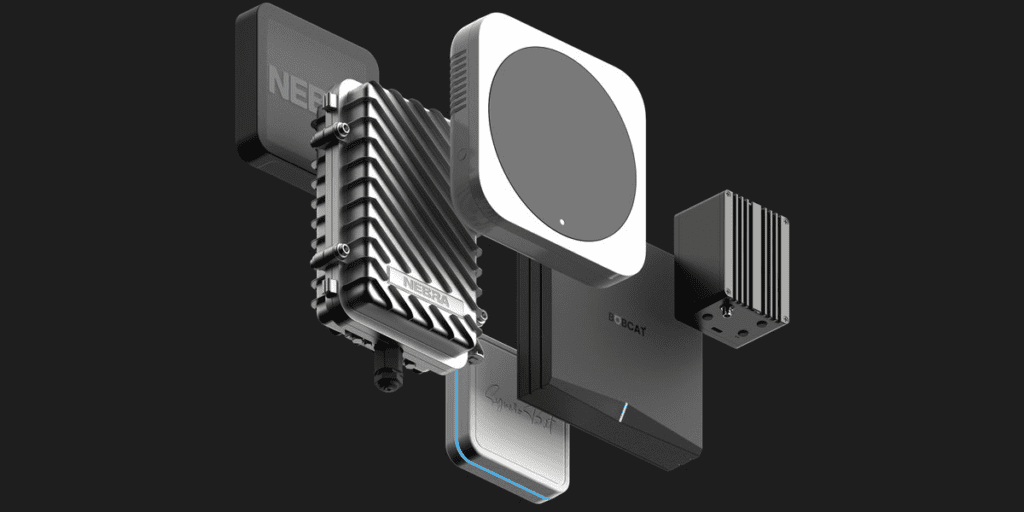The Helium Network (HNT) is the first to introduce a wireless network to mine crypto. Nodes function as hotspot devices in this network, enabling HNT mining.
Crypto mining has shown to be a successful way to generate passive income from the convenience of your own home. Beginning with Bitcoin, numerous additional mineable cryptocurrencies, including Dogecoin and Ethereum Classic, were eventually included. The ease and lack of considerable capital investment are the primary factors driving the expansion of cryptocurrency mining. Numerous mineable cryptos have attracted attention throughout the years for being extremely lucrative, but none of them have persisted for very long.
Mining contributes to the process of confirming the authenticity of transactions made through a blockchain network, such as the Bitcoin blockchain. Using hardware such as a central processing unit (CPU) or application-specific integrated circuits, miners may begin mining bitcoins (ASICs). As an alternative, they can mine their preferred cryptocurrencies using smartphones running iOS and Android operating systems.
But what about cryptocurrency mining over a decentralized wireless network? Despite how strange it may sound, miners may now operate independently of costly infrastructure. By enabling nodes to function as hotspot devices, Helium Network has made it feasible. The Helium network, a brand-new blockchain-based cryptocurrency, joined the market in 2019 and attracted attention from Helium miners.

What is the Helium network?
Helium is a dispersed hotspot network that provides LoRaWAN-compatible Internet of Things (IoT) devices, a long-range wireless service that is available to everyone in the world. The open LoRaWAN protocol allows IoT devices to interact with one another via LoRa, which stands for Long Range Wide Area Network. IoT devices are intelligent gadgets that exchange data over a network, providing a wider range of connections than Wi-Fi.
A clever use of wireless technology called a helium network gets rid of Wi-connection Fi’s problems. The helium network has access to a considerably greater variety of connections, which makes it conceivable. Every device may automatically and immediately connect with other adjacent devices in this scenario, eliminating the need for a centralized hub (often routers).
The sole purpose of the Helium blockchain was to promote the creation of actual, decentralized wireless networks. Using a special, portable radio router called a hotspot, anybody with Helium may own and operate a wireless Internet of Things network. Wireless plug-and-play gadgets called hotspots provide better connectivity than WiFi.
The People’s Network, a long-range wireless network that covers IoT devices with low power needs, is built by miners using hotspots in return for HNT, the native cryptocurrency of the Helium blockchain. The Helium Community has given permission to independent producers to market a variety of Helium Hotspots.
The Helium blockchain uses the proof-of-coverage (PoC) algorithm, a unique work method, to verify that hotspots properly identify their location and the wireless network coverage they are producing from it. The mining method makes use of radio waves, and hotspots get rewards for sharing device data, completing PoC tasks, and serving as witnesses for peers’ success. The Helium Network Explorer is the best tool for examining data connected to POC.
However, why would anybody pick Helium Network instead of their regular internet service provider? Helium’s total encryption, high level of security, and reasonably priced worldwide internet access are a few of the likely explanations.
Users also are not responsible for paying expenses that a cellular operator could levy, such as overage charges or the price of additional hardware like a SIM card. To start using the Helium Network, customers just pay for the data utilized to connect their devices via the Helium Console.

What is a Helium miner?
Helium miners provide wireless network coverage for the Helium network using specialized gear called hotspots. Users may become Helium network miners by purchasing or building a WHIP-compliant hotspot and staking a token deposit proportionate to the density of other miners working in their region.
A bi-directional data transfer mechanism between wireless devices and the internet is offered by the Helium Wireless protocol called WHIP, in addition to the blockchain protocol. WHIP is a network of independent providers rather than a single coordinator. Internet programs that purchase encrypted device data from miners, known as routers, are tasked with proving to hotspots that the data was transported to the appropriate destination and that the miner should be paid for their services.
Hotspots are of three types:
- Full hotspots: These hotspots keep a complete replica of the HNT blockchain and are rewarded for all participation-related actions, such as proof-of-coverage.
- Light hotspots: These hotspots utilize validators to participate as complete hotspots without suffering the additional expenses of maintaining a local copy of the blockchain, thanks to the Light Hotspot software. Additionally, they receive compensation for data transmission and proof-of-coverage operations.
- Data-only hotspots: These hotspots employ validators to gather data on the Helium blockchain, the same as light hotspots do. However, they only receive compensation for data transmission operations.
How does a Helium miner work?
Instead of using CPUs or ASICs, helium is mined using radio wave technology. Additionally, a wireless network that is more dependable than the network offered by well-known traditional wireless service providers is created using blockchain technology.
Helium hotspots or miners use specialized equipment called LoRaWAN transmitters to give long-range wireless coverage. How can I obtain Helium tokens in exchange? Miners get HNT through mining and enhancing The People’s Network’s coverage with suitable hotspots. The reward amount is connected to how much data a miner will transport; more money is awarded when more device data is sent.
Additionally, the network assigns proof-of-coverage tests automatically and at random to confirm the hotspots’ locations. Hotspots are given instructions or challenges by validators to transmit payloads to any nearby hotspots for observation and verification in order to take part in PoC. These challenges are often known as beacons. However, HNT hotspot miners without neighbors get paid less because they may only mine HNT for data transmission and cannot verify their beacons.
Additionally, in order to transfer data to the internet, each compatible device needs data credits (DCs). Burning HNT to reach a burn and mint equilibrium (BME), which lowers the overall supply of HNT, produces DCs. Customers who want to utilize a service do not directly pay a counterparty while using the BME model since tokens are used as a proprietary form of payment. They burn tokens instead.

Pros and cons of Helium mining
Pros
The Helium miner may employ radio technology and create HNT coins since it is wireless. Anyone can put it up and begin mining with it thanks to its proof-of-coverage methodology and collect rewards immediately. Anyone interested in starting to mine HNT cryptos and generating a reliable passive income may do so, thanks to this genuinely innovative piece of technology. Except for joining a Helium hotspot, there is no capital investment necessary to begin mining.
Cons
HNT token profits cannot be withdrawn directly from an individual’s Helium wallet. You must move the HNT to a suitable exchange in order to accomplish this. Furthermore, too many random variables, such as the antenna’s position, height, etc., affect how much money is made overall.
Conclusion
Helium mining profitability must be compared between now and then when deciding whether it is profitable or not. The total number of Helium hotspots was 14,000 in January 2021, but today there are 900,000 of them, with the same prizes being distributed. New miners join the Helium network every day, which dramatically lowers the profitability and overall mining payouts.

In this case, it appears that those that joined the Helium network early have reaped the most benefits from mining HNT. However, all entrants must make sure that the network adequately rewards their mining efforts.
Although there is no manner in which Helium mining can guarantee earnings, that is the cryptocurrency market for you. Everything in this market is extremely erratic and liable to alter at any time. While it is true that Helium miners provide a novel approach to producing passive income, we have not yet noticed any modifications to this project. This is because revenues vary from person to person.
DISCLAIMER: The Information on this website is provided as general market commentary and does not constitute investment advice. We encourage you to do your own research before investing.
Join us to keep track of news: https://linktr.ee/coincu
Harold
Coincu News















